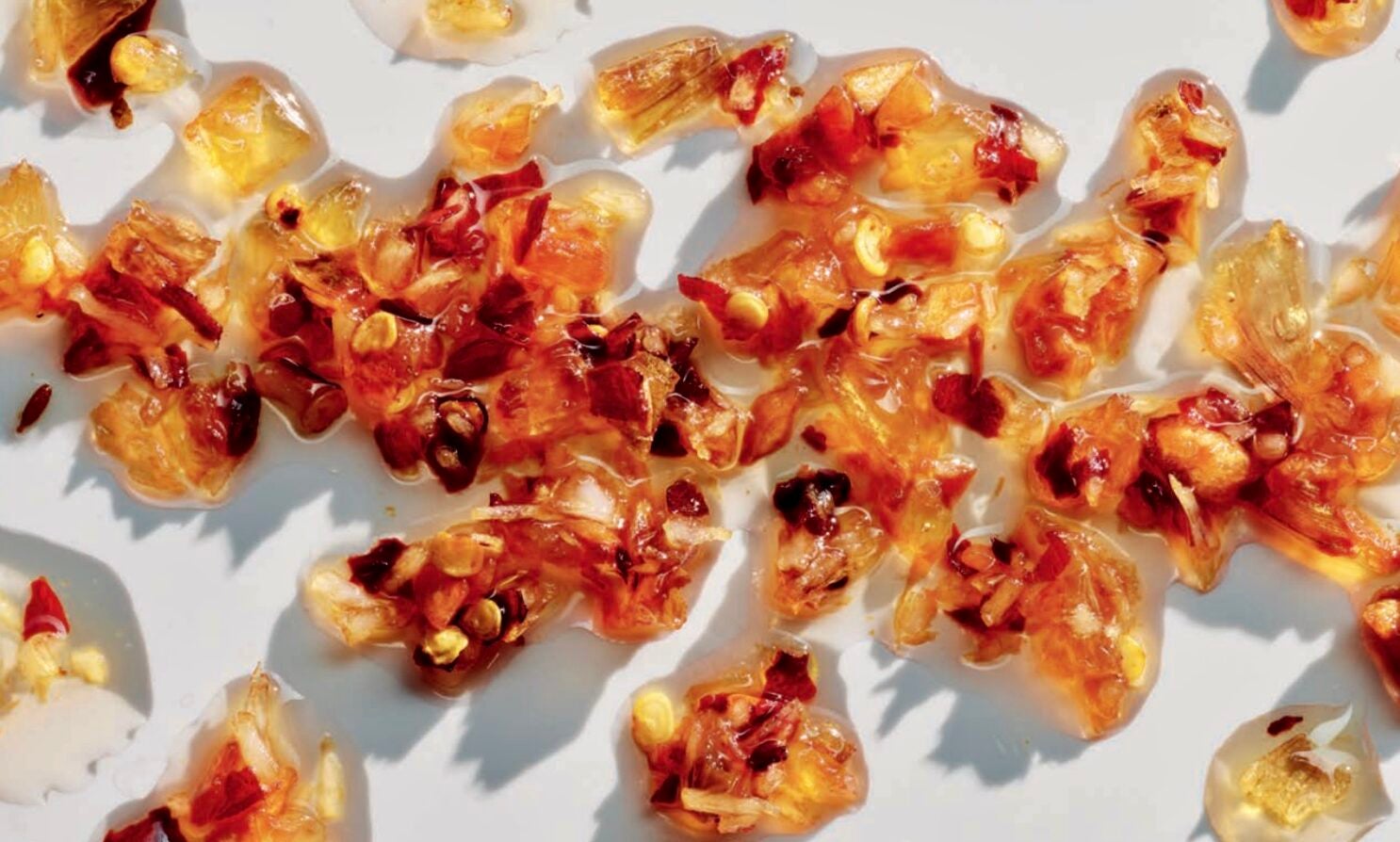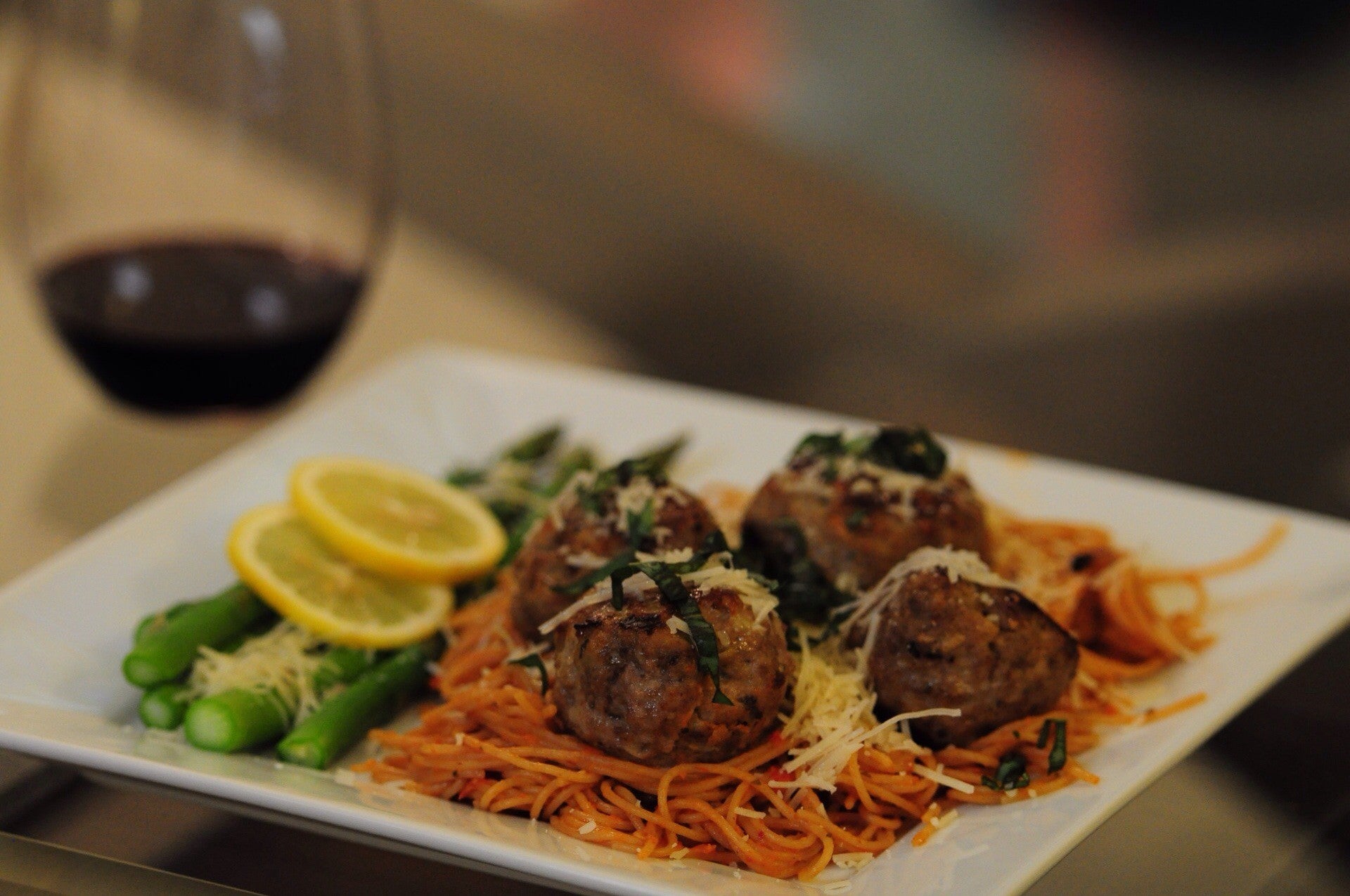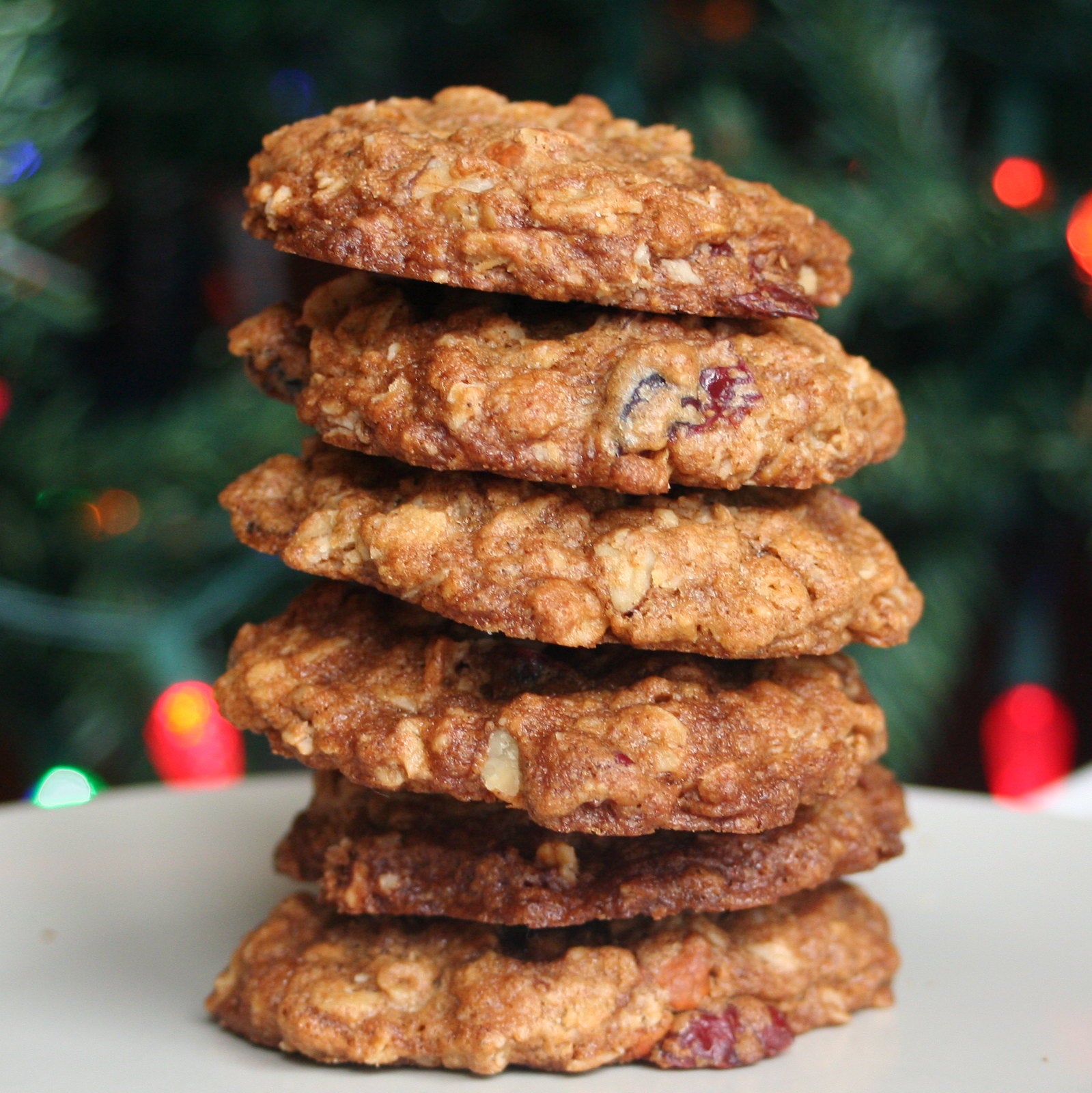Drying is one of the oldest methods of food preservation. Judith Siers-Poisson learns how to dry a wide range of foods, including fruits, herbs, vegetables and meats, at home.
Featured in this Show
-
The Cavemen Were Right: Drying Foods Makes Sense
Humans have been extending the “shelf life” of food by preserving it since prehistoric times. The author of a new book says one of those early methods of preserving foods — dehydration — is still practiced today.
Teresa Marrone has written many regional books, field guides and cookbooks, with her most recent being “The Beginner’s Guide to Making and Using Dried Foods.” Marrone said that the discovery of drying foods was probably an accidental one. After a hunt, strips of meat were laid out and dried without spoiling. Those ancestors realized that it wasn’t only useful to be able to eat the meat over a longer period of time, but also to “reduce its weight to carry it with them.” Modern-day campers often use dried foods for those same reasons.
The science behind dehydrating food is quite simple. About 80 to 90 percent of the water is allowed to evaporate from food through long exposure to a low heat source. That means that the fruit, vegetable, meat or herb gets dried without being cooked.
An important element of the process, Marrone said, is to “highly reduce any chance of bacterial spoilage.” The risk can’t be completely eliminated, she said, because there is still bacterial action present. But through proper dehydration and storage, the risk can be made very low.
In addition to reducing their weight, Marrone said dehydrating foods often makes them smaller than their fresh counterparts.
“For example, you can take a package of frozen French green beans … dump them onto the dehydrator without any preparation and dehydrate them,” she said. “In the frozen state, you’re probably talking about four or five cups of green beans. When it’s dehydrated, it fits into about a pint jar.”
For those who want to get started drying food, but are a little hesitant, Marrone advises to try dehydrating apples.
“They are easy to get, they’re fairly cheap, they dehydrate well, we’re familiar with them, and they have a lot of uses,” she said.
She added that since dried apples are fairly well-known product, it’s easy to compare home-made batches to what a person is familiar with.
Once a novice dehydrator chalks up a success with apples, Marrone said, the sky’s the limit.
“You’ll say ‘Hey! Wow, I can do that! Now I can try drying watermelon or zucchini,’” said Marrone. (She described dried watermelon as chewy, “like taffy,” and a favorite with kids.)
Even for those who would rather buy their dried foods instead of preparing them at home, Marrone has recipes that use readily available dehydrated foods. There’s even a recipe for Scandinavian Crispbreads that are baked right in the dehydrator.
(Recipes from The Beginner’s Guide to Making & Using Dried Foods, by Teresa Marrone [Storey Publications])
Fruit Smoothie
Makes 2 servings (about 1 cup each)
- 1/3 to 1/2 cup dried fruit slices, diced dried fruit, or dried berries*
- 1 3/4 cups milk (dairy milk, soy milk, or almond milk)
- Half of a fresh banana
- 1/2 cup plain yogurt
- 1 to 1 1/2 tablespoons honey
- 1/8 teaspoon vanilla extract
1. Combine the fruit and milk in a medium mixing bowl, stirring well. Cover and refrigerate overnight.
2. Pour the fruit mixture into a blender. Pulse a few times, then blend until the fruit is fairly well chopped.
3. Add the banana, yogurt, honey, and vanilla. Pulse a few times, then process on high until the mixture is smooth. If the mixture is thicker than you like, add a little additional milk and process briefly. Divide between 2 glasses and serve immediately.
*Use all one type, or a mix: apricots, blackberries, blueberries, cantaloupe, cherries (sweet), honeydew melon, huckleberries, kiwi fruit, mangoes, nectarines, papayas, peaches, persimmons, plums, raspberries, strawberries, or watermelon.
Couscous with Fruit and Nuts
Makes 5 servings
- 1 3/4 cups chicken broth, low-sodium or regular
- 3 tablespoons diced dried peaches, nectarines, or apricots, cut into 1/4-inch dice before measuring
- 3 tablespoons dried grapes or purchased raisins
- 2 tablespoons dried cranberries
- 2 teaspoons butter or olive oil
- 1/4 cup slivered almonds
- 3/4 teaspoon dried herb blend of your choice
- 1 cup couscous
1. Combine the broth, peaches, grapes, and cranberries in a medium saucepan. Heat over medium heat until mixture reaches a gentle boil. Cook for 5 minutes. Remove from the heat and let stand for 10 minutes.
2. Place a small strainer over a heatproof measuring cup. Strain the broth and fruit mixture. Set the strainer with the fruit in a bowl and set aside. Add water to the broth if needed to equal 1 1/2 cups, and set aside. Rinse and dry the saucepan.
3. Melt the butter or heat the oil in the cleaned saucepan over medium heat. Add the almonds and cook, stirring frequently, until golden brown (be careful not to burn them). As soon as the almonds are nicely colored, add the broth and herbs. Heat until boiling, then stir in the drained fruit. Return to boiling, then add the couscous and stir well. Cover and reduce heat so the mixture is simmering. Cook for 2 minutes, or until liquid has been absorbed. Remove from heat and set aside for 5 minutes. Fluff before serving.
Cauliflower Popcorn
Makes 2 or 3 servings
- For this snack, use florets that are about 1/2 inch at their widest; cut off longer stems from the florets (you can use those in other dishes) so the florets look like large popcorn. Nutritional yeast — also called brewer’s yeast — provides great flavor and nutrition. Look for it at health-food stores.
- 4 cups orange or white cauliflower, broken into small florets before measuring
- 1 teaspoon olive oil
- 2 tablespoons finely grated Parmesan cheese
- 1 teaspoon nutritional yeast powder, optional
- 1/4 teaspoon salt
1. Steam-blanch the florets for 3 minutes. Chill in ice water, then drain and pat dry with paper towels.
2. Place the blanched, dried florets in a large mixing bowl. Add the oil; toss well with your fingertips to lightly coat each piece of cauliflower with the oil. Sprinkle about half of the Parmesan, nutritional yeast, and salt over the cauliflower and toss well, then sprinkle the remaining Parmesan, yeast, and salt into the bowl and toss thoroughly.
3. Line dehydrator trays or racks with solid sheets. Spread the cauliflower over the sheets, piling loosely; it will shrink as it dries. Dehydrate at 145 degrees for 2 to 3 hours, or until the florets are beginning to dry. Stir gently and continue dehydrating until crisp and dry; total drying time will be 5 to 7 hours.
Scandinavian Crispbread
Makes 4–5 dozen crackers (depending on size)
These are particularly good with jam, but also work well with cheese or smoked salmon.
- 1/4 cup whole golden flax seeds
- 1/4 cup warm water
- 1/3 cup whole wheat flour
- 1/3 cup rye flour
- 1/4 cup sesame seeds
- 1/4 cup roasted sunflower seeds, salted or unsalted
- 1/2 teaspoon kosher salt or sea salt
- 1/4 teaspoon baking powder
- 1/4 cup cold water
- 2 tablespoons sunflower oil or canola oil
1. Process the flax seeds in a clean coffee grinder or blender until they are coarsely chopped (not ground to a meal-like consistency). Transfer to a small bowl and stir in the warm water. Set aside for 45 minutes; the mixture will become pasty. Meanwhile, cut three sheets of kitchen parchment to fit your dehydrator trays or sheets (if your dehydrator is round with a hole in the center, cut two round sheets with holes in the center and one whole, rectangular sheet).
2. Combine the whole wheat flour, rye flour, sesame seeds, sunflower seeds, salt, and baking powder in a mixing bowl. Stir with a wooden spoon until thoroughly mixed. Add the cold water, oil, and the soaked flax seed; stir until very well mixed.
3. Scoop half of the dough onto a sheet of parchment, then pat into a rectangle (for a round dehydrator tray, spoon portions of the dough around the circle of parchment). Top with another sheet of parchment and use a rolling pin to roll out very thinly; it should be about the thickness of the sunflower seeds. Remove the top sheet of parchment, then use a thin knife to score the dough into squares, triangles, or diamonds, whatever size you prefer; 1-1/2 inches is a good average size. Transfer the sheet to the dehydrator tray. Repeat with remaining dough.
4. Dehydrate until crisp and dry, 5 to 6 hours at 140 degrees. Break along the score lines. Remove the parchment and return the separated crackers to the trays, turning the crackers over. Dehydrate for about an hour longer.
Berry Cobbler
Makes 6 to 8 servings
Filling
- 2 cups dried blueberries, raspberries, gooseberries, or huckleberries (all one kind, or a mix; if using a mix, you may include up to 1/2 cup dried cranberries)
- 2 cups boiling water
- 1–1 1/2 cups sugar (depending on the sweetness of the berries)
- 2 tablespoons instant tapioca
- 1 tablespoon butter, optional
Batter
- 1/4 cup (half of a stick) butter, softened
- 1/2 cup sugar
- 1 egg
- 1 1/2 cups all-purpose flour
- 2 teaspoons baking powder
- 1/2 teaspoon salt
- 1/2 cup milk (2 percent or whole)
1. Begin preparing the filling: Place the dried berries in a heatproof bowl. Stir in the boiling water and let soak for 1 to 2 hours.
2. At the end of the soaking time, preheat oven to 375 degrees. Coat a 9-inch square glass baking dish with cooking spray; set aside.
3. Drain the berries, reserving the soaking liquid. Add the soaking liquid and 1/2 cup of the soaked, drained berries to a blender. Process to a fine purée. Add 1 to 1 1/2 cups sugar and the tapioca to the purée and blend.
4. Arrange the remaining berries in a prepared baking dish. Pour the purée over the berries in the baking dish. Dot with butter, if using. Set aside.
5. Prepare the batter: In a mixing bowl, beat the butter with an electric mixer until light and fluffy. Add the 1/2 cup sugar and beat until smooth. Add the egg and beat well. Sift together the flour, baking powder, and salt into a medium bowl. Add about 1/2 cup of the flour mixture to the butter mixture and stir with a wooden spoon just until moistened. Add half of the milk and stir to blend. Stir in another 1/2 cup of the flour mixture, then the remaining milk; add the remaining flour mixture and stir until moistened. Spoon the batter over the berries in small clumps, distributing to cover the berries; the top of the batter will be uneven.
6. Bake for 25 to 30 minutes, or until the filling is bubbling and the topping is nicely browned. Serve warm, with cream or whipped cream if you like.
Episode Credits
- Judith Siers-Poisson Host
- Judith Siers-Poisson Producer
- Teresa Marrone Guest
Wisconsin Public Radio, © Copyright 2024, Board of Regents of the University of Wisconsin System and Wisconsin Educational Communications Board.





